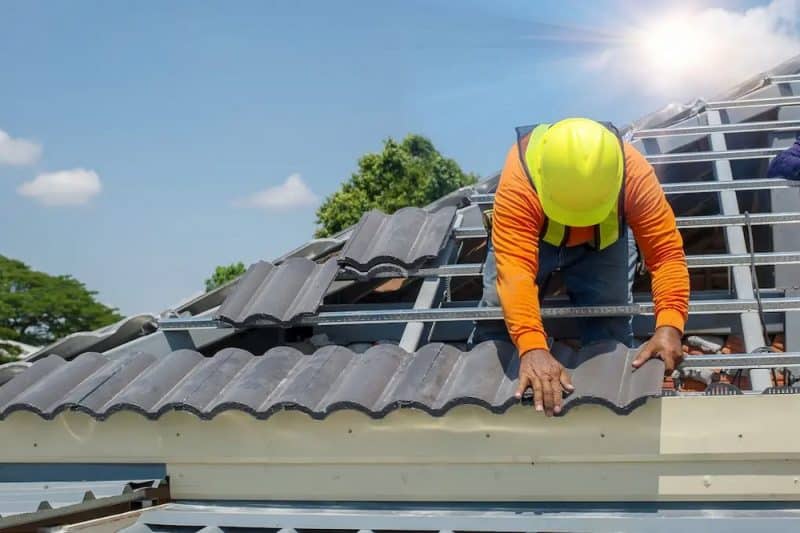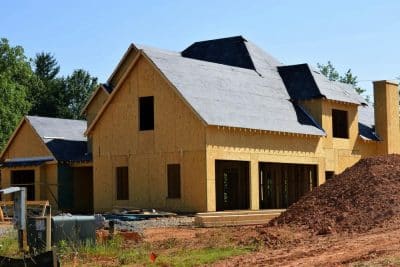
A roof replacement is a significant home improvement project that requires careful planning and execution. Whether you’re dealing with extensive damage, frequent roof repairs, or simply want to upgrade your home’s aesthetic and energy efficiency, replacing your roof is a major decision. This comprehensive guide will walk you through every process step, from initial planning to final inspection, ensuring a smooth and successful roof replacement project.
Why Roof Replacement Matters
Over time, roofs can deteriorate due to constant exposure to sun, rain, wind, hail, snow, and extreme temperatures. A damaged or aging roof can lead to many problems, including leaks, water damage, mold growth, structural damage, and even health hazards. Ignoring these issues can lead to costly repairs down the road and compromise the safety and comfort of your home.
Roof replacement is a proactive measure that not only safeguards your home but also enhances its value and curb appeal. A new roof can improve your home’s energy efficiency, reduce your heating and cooling costs, and give your home a fresh, updated look. For multi-family property owners, roof replacement is an essential part of property maintenance that can attract and retain tenants. Partnering with a reputable Austin multi-family roof replacement company can streamline the process and ensure a successful outcome for larger-scale projects.
Planning Your Roof Replacement
Assessing Your Needs
The first step in planning your roof replacement is to assess your needs. Consider the age and condition of your existing roof. Are you dealing with leaks, missing shingles, or other signs of damage? Or are you simply looking to upgrade to a more durable or energy-efficient roofing material? Understanding your needs will help you determine the scope of the project and choose the right materials and contractor.
Setting a Budget
Roof replacement is a significant investment, so it’s important to establish a realistic budget early on. Research the average costs of roof replacement in your area and factor in the size and complexity of your roof. Get multiple estimates from reputable roofing contractors to compare prices and services. Keep in mind that the cheapest option may not always be the best, as quality materials and workmanship are essential for a long-lasting roof.
Choosing the Right Roofing Materials
The choice of roofing material is a critical decision that will affect the longevity, performance, and aesthetic appeal of your new roof. There are numerous options available, each with its own advantages and disadvantages.
Asphalt shingles: These are the most common roofing material due to their affordability and versatility. They come in various colors and styles and are relatively easy to install.
Metal roofing: Metal roofs are known for their durability and longevity. They are resistant to fire, wind, and hail, and they can reflect sunlight, helping to reduce energy costs.
Tile roofing: Tile roofs are aesthetically pleasing and offer excellent durability. They are fire-resistant and can withstand harsh weather conditions, but they are also heavier and more expensive than other options.
Wood shakes: Wood shakes provide a natural, rustic look and offer good insulation. However, they require more maintenance than other materials and are more susceptible to fire and insect damage.
Research different roofing materials, consider your budget and preferences, and consult with a roofing professional to determine the best fit for your home and climate.
Selecting a Roofing Contractor
Choosing the right roofing contractor is essential for a successful roof replacement project. A qualified and experienced roof repairs company will ensure that the work is done correctly, efficiently, and to your satisfaction. Here are some tips for finding a reliable roofer:
Ask for referrals: Talk to friends, family, neighbors, or colleagues who have recently had their roofs replaced.
Check credentials: Verify that the contractor is licensed and insured.
Read online reviews: Look for reviews on websites like Google, Yelp, or Angie’s List.
Get multiple estimates: Compare prices and services from several contractors.
Ask about warranties: Ensure the contractor offers warranties on both materials and labor.
Check for experience: Choose a contractor who has experience with your specific type of roofing material and project scope.
Preparing for Roof Replacement
Before starting your roof replacement project, check with your local building department to see if you need any permits. In most areas, roof replacement requires a permit, and failing to obtain one can result in fines or delays. Your roofing contractor can usually handle the permit process for you.
Roof replacement can be a messy and disruptive process. Before the work begins, take steps to protect your property. Move any valuable items from your attic or garage, cover your landscaping, and protect your driveway and walkways.
Let your neighbors know about your roof replacement project in advance. This will give them time to prepare for any potential disruptions, such as noise or debris.
The Roof Replacement Process
Removing the Old Roof
The first step in the roof replacement process is removing the existing roofing material. This involves stripping off the old shingles, underlayment, flashing, and any other components. The roofers will carefully remove these materials, taking care to protect the underlying roof deck.
Inspecting and Repairing the Roof Deck
Once the old roof is removed, the roof deck is exposed and can be thoroughly inspected for any damage. The roofers will check for rot, water damage, or structural issues that need to be addressed before installing the new roof. Any necessary repairs, such as replacing damaged wood or reinforcing weak areas, will be made at this stage.
Installing the New Roof
With the roof deck prepared, the next step is installing the new roofing material. The specific process will depend on the type of material chosen. For asphalt shingles, the roofers will install a layer of underlayment to protect the roof deck from moisture, followed by the shingles themselves. For metal roofing, the panels will be carefully measured and installed, ensuring a tight and secure fit. Tile and wood shake installations require specialized techniques and tools.
Completing the Finishing Touches
After the new roofing material is installed, the final touches are added. This includes installing flashing around chimneys, vents, skylights, and other protrusions to prevent leaks. The roofers will also replace gutters and downspouts, ensuring proper drainage to protect your home from water damage.
After the Roof Replacement
Once the roof replacement is complete, a final inspection is performed to ensure that the work meets local building codes and industry standards. The roofers will thoroughly check for any leaks, loose shingles, or other issues that need to be addressed. This inspection is crucial for ensuring the quality and longevity of your new roof.
Your new roof should come with a warranty from both the manufacturer and the contractor. Make sure you understand the terms of the warranty, including what is covered, how long it lasts, and what steps you need to take to make a claim. Regular maintenance is also important for maximizing the lifespan of your roof. This includes cleaning gutters, removing debris, and inspecting for any signs of damage.
Conclusion
A new roof is a significant investment, but it can bring years of enjoyment. By carefully planning your project, choosing the right materials and contractor, and following the steps outlined in this guide, you can ensure a successful roof replacement that will protect your home for many years. Whether you’re a homeowner looking to upgrade your property or a multi-family property owner seeking a reliable multi-family roof replacement company, this guide provides the information you need to navigate the roof replacement process with confidence.








